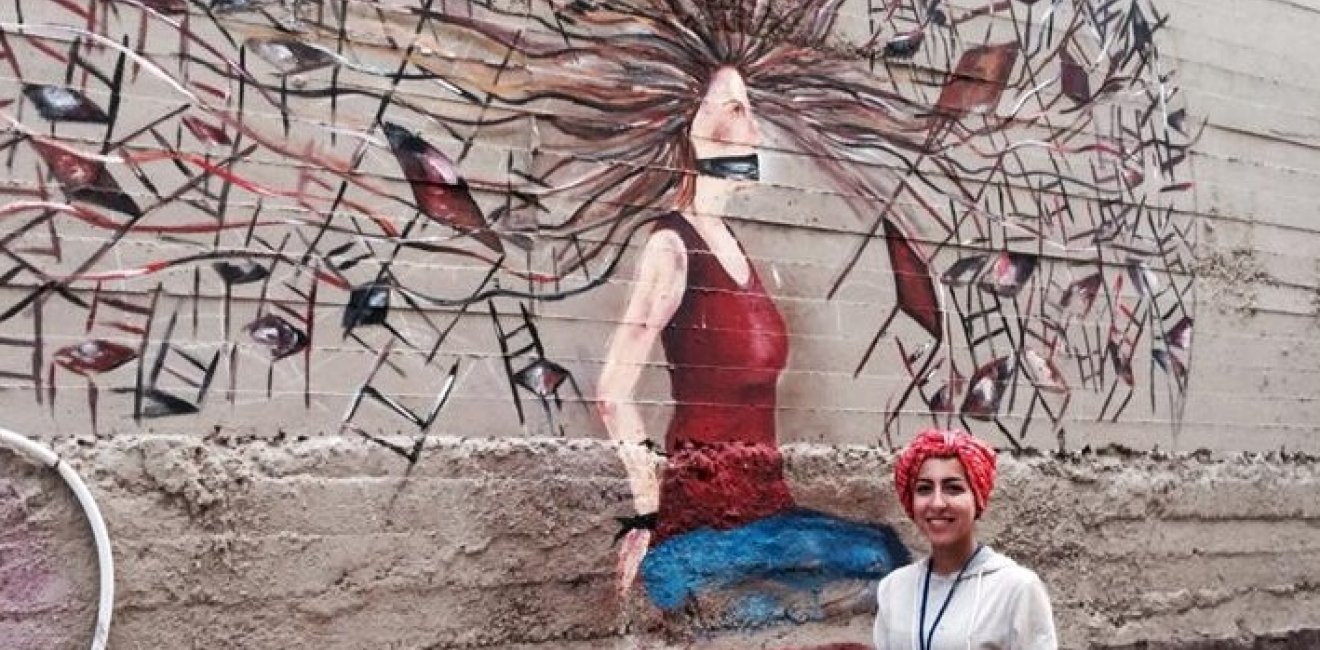The global COVID-19 crisis has illuminated gender gaps that exist in public leadership around the world; namely, the absence of women’s voices in top government positions. With the exception of a few notable cases in Europe, New Zealand, Hong Kong and Taiwan, which have been recognized in the media for their successful navigation of the crisis, in other parts of the world decision-makers and public officials at the forefront of response efforts are predominantly men.
This is especially true in the Middle East and North Africa region where all current ministers of health, with the exception of Qatar and Bahrain, are men. In my country, Jordan, the government set up a private sector-led committee to coordinate the COVID-19 response – comprised only of men. Women activists objected on social media, noting that the seven Jordanian entrepreneurs that made it to the 100 most powerful women in MENA list for 2020 were completely overlooked for this committee.
In neighboring Lebanon, nearly 80 percent of nurses in the country’s healthcare sector are women. However, women are rarely seen in leadership positions in the field and thus have not been at the helm of committees set up to respond to COVID-19. Similarly, in Oman, the 11 member Supreme Committee set up to supervise all COVID-19 response efforts included only one woman.
However, women are rarely seen in leadership positions in the field and thus have not been at the helm of committees set up to respond to COVID-19.
In Tunisia, a special UN report on gender and COVID-19 noted that while some women were promoted to leadership positions in “scientific, medical and academic committees… the previous low representation of women in decision-making bodies has had a major impact on the management of the COVID-19 crisis.”
These are merely a few reminders of the women’s leadership deficit in the region, especially in the public sector, which for the first time is now quantified and analyzed in The Middle East Women Leaders Index, recently published in a new Wilson Center report, Ready to Lead: Understanding Women's Leadership in the Middle East and North Africa. The index analyzes women’s public sector leadership in the executive, legislative, judiciary and national security branches of government at the national level.
Beyond ‘descriptive representation’
This new data tool compares the extent of women’s ‘authority’ in the public sector across the MENA region using a newly designed Pipeline-Participation-Authority Framework (PPA). PPA looks beyond ‘descriptive representation’ between men and women and expands the boundaries of gender parity in public institutions by considering barriers as well as enablers for women to reach positions of authority – but also the decision making power they have in such positions. In most countries in the region, it is customary to see women ministers leading “feminized” portfolios such as social development, culture, or education. While these are important state functions, these ministries have inadequate resources in contrast to “powerful” cabinet ministries like defense, finance, commerce and Industry – traditionally led by men.
…it is customary to see women ministers leading “feminized” portfolios such as social development, culture, or education. While these are important state functions, these ministries have inadequate resources in contrast to “powerful” cabinet ministries like defense, finance, commerce and Industry – traditionally led by men.
For example, this index places Israel, Iraq and Sudan, in the Vertical quadrant of the “Ascending Leaders” framework, meaning that these societies do not show women leaders across policy functions. Conversely, in countries where we do see women working across policy functions, including defense and finance, but they are nowhere to be found at the top, are placed in the Horizontal category. This includes countries like Jordan, Lebanon and Kuwait. Countries that have not yet made substantial progress fall into the Aspiring category, such as Yemen and Iran. These societies are sobering reminders of how long the road is to progress.
However, hope for change lies with the MENA countries where women are successfully breaking both ‘glass ceilings’ and ‘glass walls’. These Ascending countries include the United Arab Emirates, which witnessed the first woman speaker of parliament, Dr. Amal Qubaisi, and Tunisia which saw two women candidates run for the presidency of the republic in 2019. These countries are pioneering models of how to draw women into diverse areas of government and project them into seats of power.
Gender inequities at the core of the leadership deficit
At the heart of this leadership deficit lie the very challenges and gender inequities this pandemic has exposed: low female labor force participation and gender pay gaps. Across the MENA region, despite high achievement in education including at the tertiary level, women are dropping out of the workforce in their prime working years, a phenomenon dubbed “the MENA paradox” by the World Bank. Sadly, this phenomenon will be amplified in the post COVID-19 era. According to a recently published impact assessment by UN Women, the COVID-19 crisis will result in an alarmingly high loss of 700,000 jobs held by women in the Arab MENA region. In countries such as Egypt where the informal sector represents more than 60 percent of employment, many women will lose their jobs.
Another sobering challenge exposed by the pandemic is the imbalance in gender roles and decision-making power in the household. The additional work created by curfews and lockdown orders, namely homeschooling or supervising the learning of children and house chores, predominantly falls on women – and not by choice. The aforementioned UN Women report also notes that access to information for women during the crisis is restricted due to “discriminatory norms prioritizing male access to the family computer.”
This power imbalance extends to other realms including women’s ability to make financial decisions, asset ownership, as well as discriminatory inheritance practices across the region. Unsurprisingly, asset ownership and unequal inheritance are found by the Ready to Lead report to be “strong predictors” of the women’s leadership deficit in the public sector.
Unsurprisingly, asset ownership and unequal inheritance are found by the Ready to Lead report to be “strong predictors” of the women’s leadership deficit in the public sector.
These existing gender power imbalances enable domestic abuse and other forms of violence against women which have been greatly exacerbated by the pandemic. Strict restrictions on movement and socio-economic pressures on families have confined women and young girls with their abusers, be it a spouse or another male member of the family. Many countries including Jordan, Lebanon, Tunisia, Israel, and Iran have reported a sharp increase in domestic abuse complaints in the past two months. Many MENA governments proved ill-equipped to address this rising challenge. While women’s voices in civil society have loudly asserted what the government should do, once again the scarcity of women in decision-making positions in the public sector limited their ability to influence government policies in favor of protection and prevention measures.
What comes next?
As governments in the region continue to address the health and socioeconomic impact of this pandemic, they must develop both long- and short-term approaches and policies that take into consideration the gender dimensions of the COVID-19 crisis. Decision makers are presented with a unique opportunity to reform legislation that is discriminatory toward women and adopt policies that promote female labor force participation including flexible hours, affordable childcare services, and safe working conditions for women. Governments should also partner with the plethora of women-led civil society organizations that are working tirelessly to push this agenda forward and build women’s capacities to overcome existing legal and socio-cultural barriers. These women may have no formal or assigned authority, but they are exercising leadership, especially in times of crises such as this one. MENA governments must support their work and include more women at the decision-making table to ensure a more inclusive approach to this and future emergencies.
The views expressed in this article are those of the author and do not reflect an official position of the Wilson Center.
An earlier version of this article stated that all ministers of health in the principle countries of the Middle East and North Africa were men with the exception of Qatar. However the Ministers of Health of Qatar and Bahrain are both women.
This Article was updated on June 4, 2020 at 12:00PM
Author


Middle East Program
The Wilson Center’s Middle East Program serves as a crucial resource for the policymaking community and beyond, providing analyses and research that helps inform US foreign policymaking, stimulates public debate, and expands knowledge about issues in the wider Middle East and North Africa (MENA) region. Read more

Explore More
Browse Insights & Analysis
MENA360°

Russia’s Security Approach to Public Health


